Search results for: 'Amulett 664 332'
-
 Egyptian faience ring showing Bes and Taweret
Egyptian faience ring showing Bes and TaweretThe finger ring with its scene on the plate must have served a protective function for an expectant mother. New Kingdom, approx. 1550 to 1070 BC.
Price: on request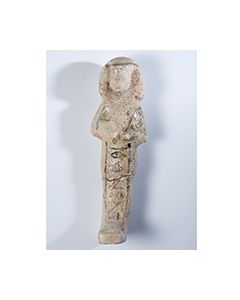 Musealer Ushebti mit Hieroglyphen
Musealer Ushebti mit Hieroglyphen22.-23. Dynastie, mit hieroglyphischer Inschrift. Typische Ausführung mit Stirnband und senkrechtem Hieroglyphenregister.Weiße Fayence, Höhe 10 cm.
Price: on request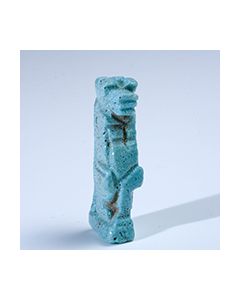 Ägyptisches Tauret-Amulett aus Fayence
Ägyptisches Tauret-Amulett aus FayenceAmulett der Nilpferdgestaltigen Göttin Tauret, der Göttin der Schwangeren und der Gebärenden. Intensive Farbgebung. Spätzeit, 26. - 30. Dynastie.
Price: on request Ägyptisches Papyrusamulett
Ägyptisches PapyrusamulettPapyrusamulett aus mintgrüner Fayence, symbolisch für Jugend und Gedeien. Spätzeit des Alten Ägyptens, 664 bis 332 v. Chr.
Price: on request Egyptian amulet of Taweret
Egyptian amulet of TaweretIt shows the goddess of childbirth in the form of a pregnant hippopotamus. The amulet from the Late Period of Ancient Egypt should exert a protective function. From a British private museum.
Price: on request Egyptian amulet of Taweret
Egyptian amulet of TaweretIt shows the goddess of childbirth in the form of a pregnant hippopotamus. The amulet from the Late Period of Ancient Egypt should exert a protective function. From a British private museum.
Price: on request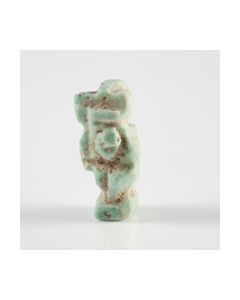 Ägyptisches Amulett der Taweret - Schutzgöttin der Schwangeren
Ägyptisches Amulett der Taweret - Schutzgöttin der SchwangerenMintgrüne Fayence. Spätzeit, Altes Ägypten, 26. bis 30. Dynastie. Hervorragender Zustand. Vollständig intakt.
Price: on request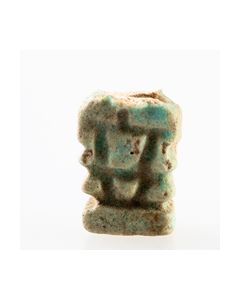 Ägyptisches Bes-Amulett
Ägyptisches Bes-Amulett26. bis 30. Dynastie, Altes Ägypten. Amulett in Form der ägyptischen Gottheit Bes in hockender Haltung, auf flachem Podest. Kopf und Haartracht fehlend.
Price: on request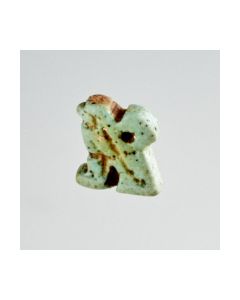 Egyptian amulet of a falcon
Egyptian amulet of a falconThe falcon in Egyptian art can be a depiction of the god Horus or symbolize the soul of the pharao. Falcon amulets are known from the earliest times in Egyptian history. However this speicmen dates to the Late Dynastic Period of Ancient Egypt.
Price: on request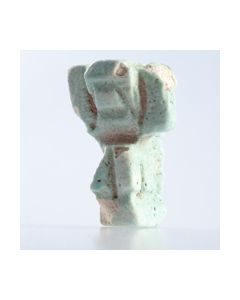 Ägyptisches Schu-Amulett
Ägyptisches Schu-AmulettAnhänger in Form der ägyptischen Gottheit Schu. Öse intakt, heute noch tragbar. Spätzeit des Alten Ägypten, ca. 652-332 v. Chr. 26. bis 30. Dynastie.
Price: on request Egyptian amulet of Anubis
Egyptian amulet of AnubisThe amulet from the Late Period of Ancient Egypt was supposed to protect the dead on their way to the afterlife. From a British private museum.
Price: on request Egyptian amulet of Anubis
Egyptian amulet of AnubisThe amulet from the Late Period of Ancient Egypt was supposed to protect the dead on their way to the afterlife. From a British private museum.
Price: on request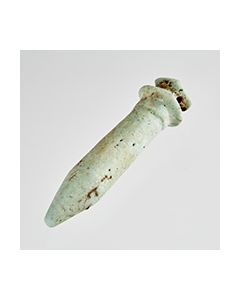 Egyptian papyrus scepter amulet
Egyptian papyrus scepter amuletPapyrus scepter made of faience. Late Period of Ancient Egypt. It symbolizes prosperity and youth. From the stock of a british private museum.
Price: on request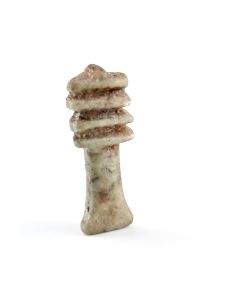 Djed-Pfeiler als Amulett
Djed-Pfeiler als AmulettÄgyptische Spätzeit, 26. bis 30. Dynastie. Mintgrüne Fayence. Der Djed-Pfeiler steht für Dauer und Beständigkeit und war im Alten Ägypten als Amulett sehr beliebt.
Price: on request Egyptian scarab amulet
Egyptian scarab amuletNice amulet from the Late Dynastic Period of Ancient Egypt. The scarab was exhibited in an early 20th century private museum.
Price: on request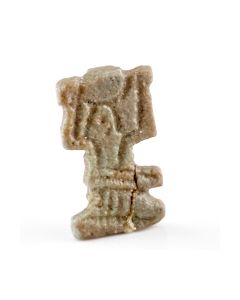 Amulett des Gottes Schu
Amulett des Gottes SchuDer ägyptische Gott Schu wurde u.a. mit der Hitze des Sonnenlichts assoziiert. Das Amulett zeigt ihn kniend, mit der Sonnenscheibe zwischen den erhobenen Armen. Aus der Spätzeit des Alten Ägyptens.
Price: on request Egyptian papyrus scepter amulet
Egyptian papyrus scepter amuletPapyrus scepter made of faience. Late Period of Ancient Egypt. It symbolizes prosperity and youth. From the stock of a british private museum.
Price: on request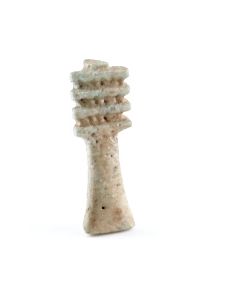 Djed pillar amulet
Djed pillar amuletÄgyptische Spätzeit, 26. bis 30. Dynastie. Mintgrüne Fayence. Der Djed-Pfeiler steht für Dauer und Beständigkeit und war im Alten Ägypten als Amulett sehr beliebt.
Price: on request Djed pillar amulet
Djed pillar amuletÄgyptische Spätzeit, 26. bis 30. Dynastie. Mintgrüne Fayence. Der Djed-Pfeiler steht für Dauer und Beständigkeit und war im Alten Ägypten als Amulett sehr beliebt.
Price: on request Djed-Pfeiler als Amulett
Djed-Pfeiler als AmulettÄgyptische Spätzeit, 26. bis 30. Dynastie. Mintgrüne Fayence. Der Djed-Pfeiler steht für Dauer und Beständigkeit und war im Alten Ägypten als Amulett sehr beliebt.
Price: on request Egyptian papyrus scepter amulet
Egyptian papyrus scepter amuletAmulet in the shape of a papyrus scepter. Late Period of Ancient Egypt. It symbolizes prosperity and youth. From the stock of a british private museum.
Price: on request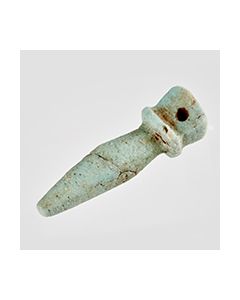 Egyptian papyrus scepter amulet
Egyptian papyrus scepter amuletAmulet in the shape of a papyrus scepter. Late Period of Ancient Egypt. It symbolizes prosperity and youth. From the stock of a british private museum.
Price: on request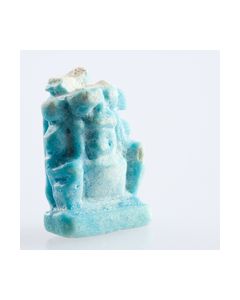 Ägyptisches Bes-Amulett
Ägyptisches Bes-AmulettAnhänger in Form der ägyptischen Gottheit Bes. Haartracht abgebrochen und fehlend. Spätzeit des Alten Ägypten, ca. 652-332 v. Chr. 26. bis 30. Dynastie.
Price: on request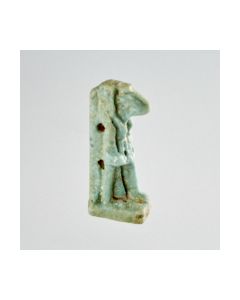 Egyptian amulet of Thoth
Egyptian amulet of ThothIbis headed god of knowledge and writing. 26th to 30th dynasty of Ancient Egypt. From a British private museum.
Price: on request Djed pillar amulet
Djed pillar amuletÄgyptische Spätzeit, 26. bis 30. Dynastie. Mintgrüne Fayence. Der Djed-Pfeiler steht für Dauer und Beständigkeit und war im Alten Ägypten als Amulett sehr beliebt.
Price: on request Egyptian amulet of Shu
Egyptian amulet of ShuGod of the air and the sun. The highly stylized figurine shows the ancient Egyptian god on his knees, the arms raised towards the sun. From a British private museum.
Price: on request Egyptian amulet of Shu
Egyptian amulet of ShuGod of the air and the sun. The highly stylized figurine shows the ancient Egyptian god on his knees, the arms raised towards the sun. From a British private museum.
Price: on request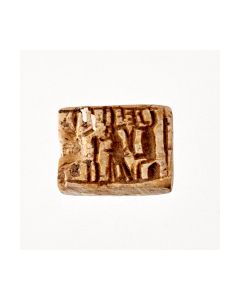 Egyptian steatite plaque
Egyptian steatite plaqueThe protective amulet shows the god Bes between two seated monkeys. Late Period of ancient Egypt. This piece is described in the catalogue of Irène Gautier-Vodoz.
Price: on request Ägyptisches Amulett des Bes
Ägyptisches Amulett des BesSitzender zwerggestaltiger Gott Bes mit hoher Federkrone. Schutzamulett für Kinder und Mütter. Spätzeit des Alten Ägyptens.
Price: on request Ägyptisches Skarabäus-Amulett
Ägyptisches Skarabäus-AmulettAmulett in stilisierter Skarabäusform aus Steatit mit Fayenceresten. Hieroglyphen auf der Unterseite. Spätzeit des Alten Ägypten, ca. 652-332 v. Chr. 26. bis 30. Dynastie.
Price: on request Ägyptisches Amulett der Isis
Ägyptisches Amulett der IsisAmulett aus Fayence mit Darstellung der Isis. Die Göttin trägt ein Gewand und eine dreigeteilte Perrücke, auf dem Kopf den Thronsitz. Spätzeit des Alten Ägyptens.
Price: on request Egyptian amulet of a hare
Egyptian amulet of a hareThis type of amulet was popular in the Late Dynastic Period of Ancient Egypt. It should endow its wearer with fertility and rapidity of movement. The piece was exhibited in an early 20th century private museum.
Price: on request Kleine ägyptische Bronzefigur des Nefertem
Kleine ägyptische Bronzefigur des NefertemWunderbare Erhaltung mit schöner, braun-grün patinierter Oberfläche. Ca. 664 v. Chr. bis 332 v. Chr., Spätzeit des Alten Ägypten.
Price: on request Große ägyptische Bronzefigur des Nefertem
Große ägyptische Bronzefigur des NefertemWunderbare Erhaltung mit schöner, braun-grün patinierter Oberfläche. Ca. 664 v. Chr. bis 332 v. Chr., Spätzeit des Alten Ägypten. Massiv, Gewicht 49,7 Gramm.
Price: on request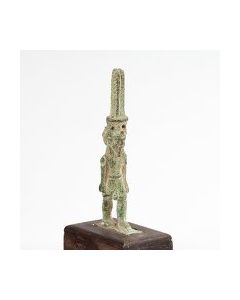 Egyptian bronze figurine of Nefertem
Egyptian bronze figurine of NefertemA major cult in Memphis saw the god related to fragrances. He is depicted here as youthful god in human form. Nice piece from the Late Period of ancient Egypt.
Price: on request Egyptian bronze figurine of Khonsu the Child
Egyptian bronze figurine of Khonsu the ChildRare depiction of the god of the moon Khonsu in the manner of the Egyptian child gods. From the Late Period of Ancient Egypt. A find from Karnak.
Price: on request

